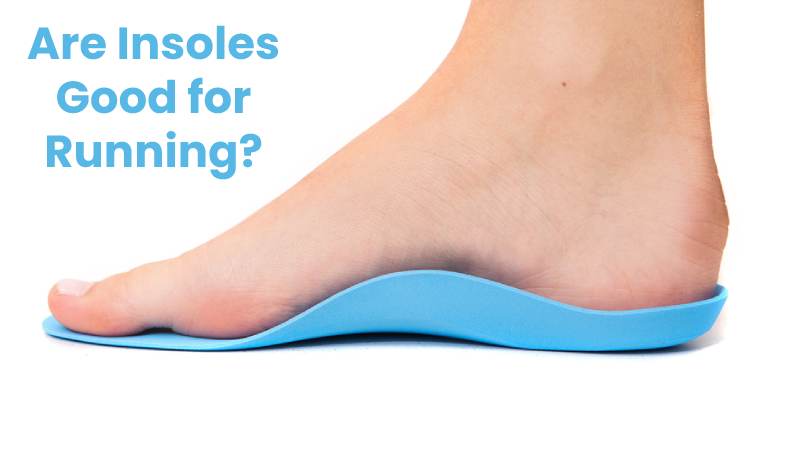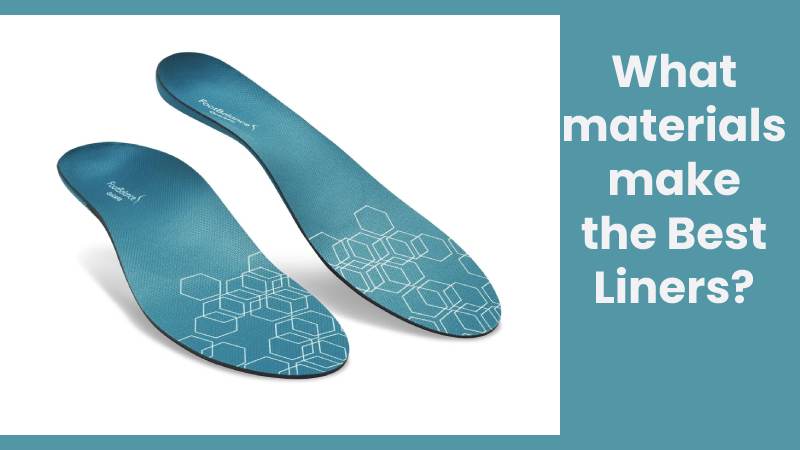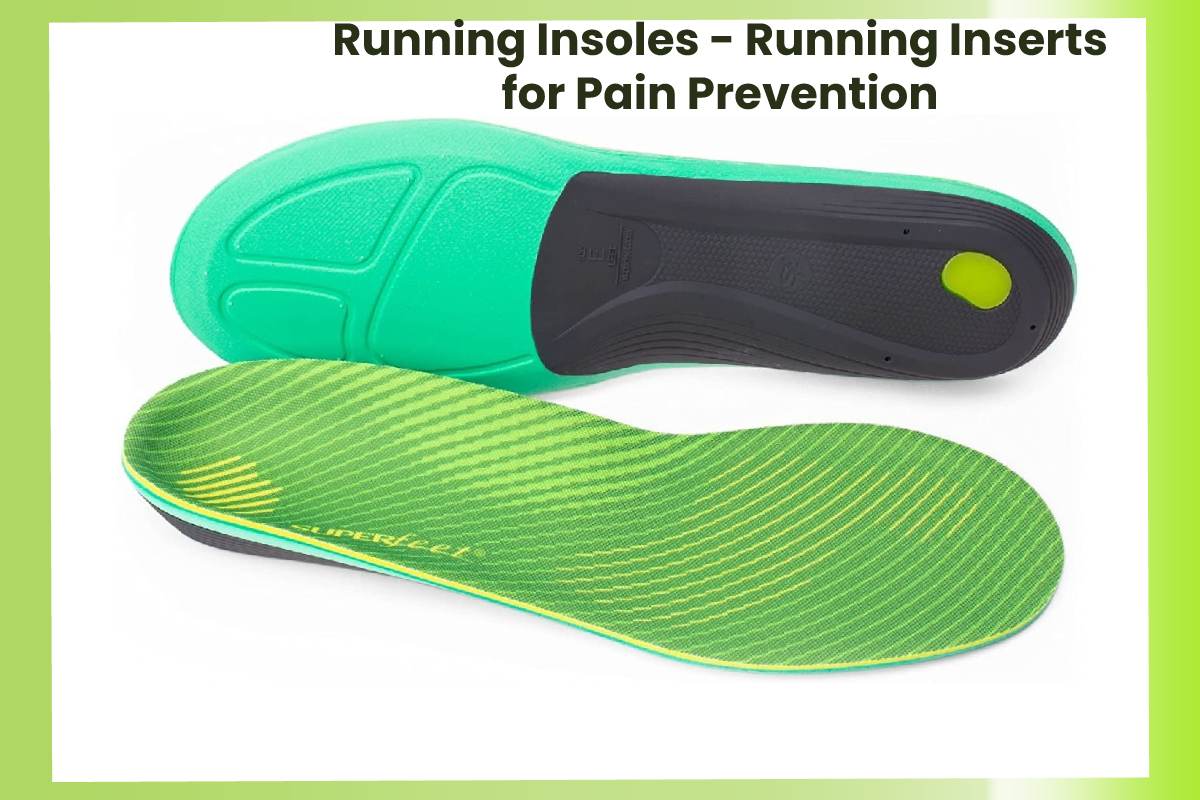Table of Contents
Are Insoles Good for Running?
The Journal of the American Podiatric Medical Suggestion cushioned insoles remained shown to reduce peak impact force during running. Many conditions and injuries are associated with the repetitive impact of running, such as heel spurs and plantar fasciitis. In addition, if insoles correct an anatomical misalignment, they may reduce the likelihood of musculoskeletal injury.

What are Liners?
The insole is a material layer on the shoe’s inner bottom. It may be included with the shoe when purchased, which is known as a factory insole. Insoles can also be purchased separately and added to shoes. This type of insole is a post-production insole. Your personal health needs, the current condition of your feet, the activities you intend to use the shoe for, and the current level of shoe quality will help you decide whether or not to add a factory insole. Use the tool to find out which liner is right for you.
How do Pads Help?
Generally speaking, they provide cushioning and structure to the shoe’s insole. Because it is the part of the shoe that your foot rests on, the shape of the insole can affect the internal structures of your foot. Imagine that you are lying on your back on a flat surface. The body of your spine will change if you add a large pillow under your lower back. The same goes for your shoes.
If your insole is entirely flat, it won’t provide support to parts of your foot like your arch. But if the insole has some added height under the turn of the foot, it will help support that part of the foot. Protalus has gone to great lengths to design an insole specifically designed to provide arch support and promote proper alignment of the talus (ankle) bone.
When this bone remains well aligned, it helps the rest of your foot and even your other joints, like the knees and hips, to function in alignment. In addition, people who suffer from conditions such as plantar fasciitis and neuropathy often look for ways to alleviate the discomfort they experience by providing proper support and alignment to these areas. It is why Protalus stands out as a leader in liner design.
What types of Insoles do Podiatrists Recommend?
There are many different types of pads on the market. Some provide only cushioning, some have built-in arch support, some are made of magnetic materials, and some have shock absorption technology. Not all of these pads have remained extensively studied, but some studies show positive results for specific conditions. For example, one study 1 concluded that for the treatment of plantar fasciitis, “prefabricated prosthetic devices. Were more beneficial than over-the-counter”.
There is no provision for using magnetic insoles for plantar fasciitis”. However, in diabetic peripheral neuropathy, a foam insole with arch support has been shown 2 to have positive results. The insoles can be used in various ways, for example, running or distributing pressure in high heels. Protalus insoles have been designed in collaboration with a team of researchers to correct kinetic chain alignment, redistribute pressure, provide arch support and add cushioning. However, we are not the only answer on the market.
Our exclusive, patented design is the only insole that incorporates our heel technology and high-quality materials into a product that matches what the scientific community has published and what health professionals say about foot discomfort. In addition, our approach is to target the root of the problem by gently realigning the talus or ankle bone rather than just masking the pain with padding.
What materials make the Best Liners?
Shoe inserts can remain made from various materials, such as gel or memory foam. The Protalus M-Series comprises four coatings: Top Cloth – ETC antimicrobial, antibacterial, moisture wicking, anti-friction lining; Body – VA shaped for contours, provides full-length cushioning and comfort; Shank – Nylon with molded shape for stability and support. Designed ridges for grip inside the shoe; Forefoot, and heel – Rogers Poron for increased long-term cushioning comfort, superior shock absorption, and antimicrobial protection.

No study can determine the best material for shoe insoles because shoe insoles have many uses. Memory foam insoles and gel insoles are popular but perform poorly in plantar fasciitis trials, although they provide elemental shock absorption and cushioning. Rigid materials offer a lot of structure but may not be practical for everyday wear. Protalus has worked hard to find a mixture of materials that allow flexibility and provide installation and cushion for everyday wear.
How often should I replace the Pads?
How often you must replace your pads depends on the materials the places remain made of and your level of use. Regardless of the brand or superiority of the liners, time is constant wear and tear, and heat will eventually compress. After pressing, you will no longer feel the original comfort, and they can be corrective.
Each manufacturer will recommend its replacement instructions. We recommend replacing Protalus pads every 5 to 6 months. They may want to remain replaced more frequently when performing higher-impact activities. Make sure you pay attention to how it feels, and look at the blue padding on the underside of the insole to see if it seems flattened. You can read about changing insoles in the article When to change Protalus insoles.
If You’re Interested, Check Out This Article:
We have provided you with information on Running Insoles; nevertheless, if you’re curious to learn more about Running Insoles, you can read the following articles:
The 6 Best Insoles For Running: 2022 Edition
The 6 Best Over-the-Counter Insoles for Runners
Insoles for Running Shoes – Amazon.com
Running Insoles to Prevent Running Pains | Dr. Scholl’s
Get Dr. Scholl’s Athletic Series Running Insoles. Designed specifically for runners, they can help prevent pain from runner’s knee, shin splints, and more.
How to Choose the Best Running Insoles | Gear Guide
Conclusion:
A great insole can help offer correct alignment. The link between runners’ lower limb alignment and shoe insoles has an original design that encourages optimal alignment. Leading to a great fit with unmatched comfort and support.

